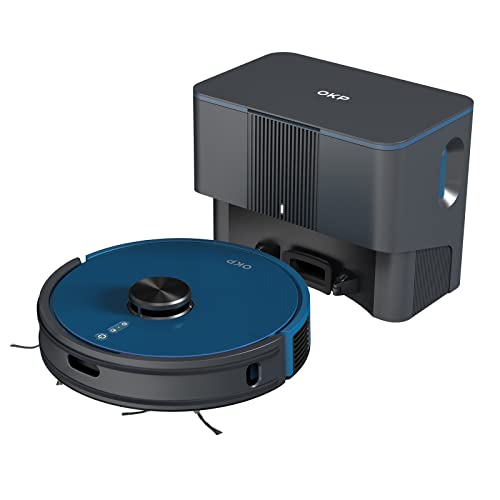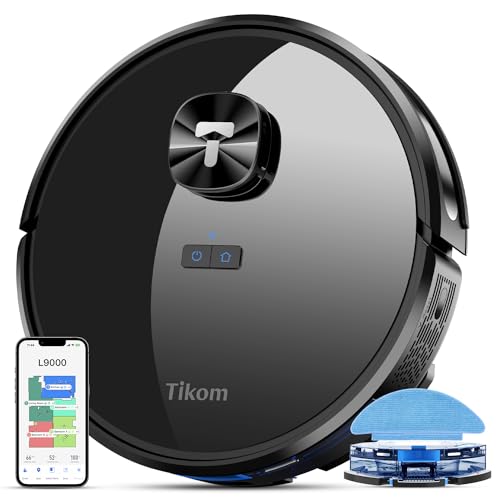Ten Robot Vacuum Lidar Products That Can Make Your Life Better
페이지 정보

본문
 Lidar Technology Elevates Robot Vacuum Cleaners
Lidar Technology Elevates Robot Vacuum CleanersThe introduction of lidar technology into robot vacuum cleaners has brought into a new age of intelligent and flexible cleaning. Lidar can be used to navigate, obstacle avoidance and optimized cleaning routes.
 It works by emitting laser beams and measuring the amount of time it takes for them to reflect off objects and return to the sensor. This information is used in order to create an image of the current surroundings.
It works by emitting laser beams and measuring the amount of time it takes for them to reflect off objects and return to the sensor. This information is used in order to create an image of the current surroundings.Accuracy and Precision
Lidar technology is a game changer in the world robot vacuum cleaners. It has elevated them to being intelligent and adaptable household companions. It enables them to map areas with incredible accuracy and precision, enabling them to navigate efficiently and avoid obstacles with ease. In comparison to other navigation technology like cameras and gyroscopes, lidar provides superior performance and reliability.
The method of operation is quite simple it is that the sensor emits a series of laser beams that reflect off objects in the room. The robot is able to calculate the distance between it and objects in the room based on the time it takes for the laser beams to reflect back onto the sensor. The robot then creates a precise map of the surroundings in real-time. This is why Lidar-equipped robots, such as the TESLA Smart Robot Vacuum Laser amazing abilities to detect obstacles, easily getting over thresholds that are low and avoiding stairs without missing a beat.
Once the robot has a complete map of the area, it uses that information to plan its cleaning path. This leads to an efficient, systematic, and thorough cleaning. Contrary to this, robots that have non-Lidar Product navigation usually follow a random cleaning pattern and ping-pong from one area to the next.
Like every other technology that are used in the field, the lidar system has its limitations. The most important problems are related to its ability to detect reflective or transparent surfaces, like glass and mirrors. The issue is that these surfaces could be mistaken for an obstacle-free zone, which could cause the robot to traverse them, which could damage the table and the robot.
Another potential issue is the vulnerability of lidar to side-channel attacks, such as attacks that exploit audio signals generated by the sensors. These attacks can be used to listen in on private conversations, or for obtaining sensitive data such as passwords and credit card numbers.
Overall lidar-equipped robotics are an excellent choice for anyone who wants to increase the convenience and cleanliness of their home. It is important to think about the pros and cons of each option before selecting one that suits your requirements.
Cleaning Strategies that are Adaptive
A robot vacuum should be able to navigate around obstacles as it moves through your home. Lidar technology has enabled this making robotic vacuum cleaners into intelligent household companions, rather than simple cleaning tools. People are increasingly choosing navigation devices with advanced capabilities. They are looking for the efficiency, precision and flexibility.
While many robot vacuums are equipped with obstacle sensors, Lidar adds another layer of accuracy to the navigation process. By analyzing the time it takes for laser pulses to bounce off objects and return to the sensor, it is able to determine the distance between nearby surfaces. This information lets it change its course in real-time in the event of a collision with an obstacle or wall.
Lidar, when combined with vision sensors that detect transparent or reflective surfaces, can detect a greater range of objects and surface textures. It can also assist the robot in avoiding areas that have already been cleaned. This makes sure that every corner of your home is given its fair part.
Other kinds of sensors can help in the navigation capabilities of a vacuum. Cameras can provide images that aids the device in identifying obstacles and objects along its path. This information can be used to help the robot move around safely and avoid obstacles such as toys or fragile items. Cameras also assist in creating virtual boundaries or no-go zones within a room to ensure that the device does not accidentally hit or damage furniture or other objects.
In addition to obstacles, a robot needs to be able to recognize patterns on floors and changes in texture. This is achieved by using vision sensors, which make use of a combination of cameras and algorithms to identify the position of features on surfaces. The sensors can generate a map and floor plan for the robot to navigate more efficiently.
Other sensors can enhance a vacuum's navigation, including cliff sensors and obstacles detection. Cliff sensors are a vital safety feature that stops the robot from falling down stairs or other hazardous surfaces. These sensors detect infrared light, which is reflective off of obstacles and can be recognized by the vac's receiver. In the same way, obstacle detection utilizes infrared signals for detecting obstacles on the ground. These signals are sent by the bumpers on the robot and can cause the vacuum to steer away from the object, avoiding the hazard.
Mapping and Memory
When it's time to assess the performance of a robot vacuum with lidar and camera, cleaning-performance tests that are performed in a straight line reveal a portion of the story. It is also crucial to look at how a robot can navigate your space and plan its cleaning routes. This is the reason why a lot of buyers opt to invest in models with mapping capabilities that use Light Detection and Ranging (lidar) technology.
lidar sensor robot vacuum-enabled robots use spinning laser sensors in order to scan their surroundings, and create digital maps. This allows them to identify walls, furniture, and other objects, and also determine their distance from the robot. The maps can be used to create more efficient cleaning routes.
These robots can produce precise maps of a single floor or a complete multi-level home. They can adapt to dynamic environments, such as moving furniture or temporary obstacles. They can also recognize a variety of different objects and surfaces, such as flooring made of hardwood, carpet and tiles. They may be unable to recognize dust, dirt or other fine particles.
In addition to facilitating more efficient cleaning, lidar navigation can also cut down on the time it takes for robots to finish their work. This is due to more precise obstacle detection and navigation, which ultimately results in shorter runtimes. A more accurate map can also mean less redundant work and redundancy which in turn will reduce running costs.
Lidar isn't the only mapping technology utilized in robotic vacuums. However it is the most advanced. Many models employ the combination of technologies, like CV-SLAM (ceiling vision-based simultaneous mapping and location) and an upward-facing camera to sense their environment. These systems can overcome a few of the limitations of gyroscopeand accelerometer mapping, for instance the inability to recognize the height and presence of narrow obstacles, such as bookcases.
Some robotic vacuums also feature an internal memory that can remember the layout of your home which makes them easier to operate without relying on remote control. They can also detect obstacles that are repeated and adjust themselves to eliminate them. This is particularly helpful for pet owners who have dirt that is difficult to distinguish from dirt and debris with sensors.
Integration with Smart Home Ecosystems
Modern smart vacuum robots that are equipped with Lidar navigation systems can seamlessly integrate with the ecosystems of your home. They can communicate with other devices that are connected, like your alarm system or smart bulbs for lighting. They can also utilize data analytics to continuously improve their performance by optimizing cleaning routes and adapting to changes in environments. They can also be controlled with voice commands, allowing you to use them with no having to pay attention.
This allows them to follow optimized cleaning routes that make efficient use of the space covering all areas of a room with minimal unnecessary movements. This saves energy and time, and helps ensure that each and every inch of your living space is thoroughly cleaned.
In contrast to models in budget which rely on the outdated bump-and-move system of navigation, Lidar-based robots are not spending time. This is because they do not use up energy by moving slight to the left or right to avoid obstacles like the robots use their traditional bump sensor. They avoid obstacles by using their precise mapping capabilities which makes them more efficient than traditional robot vacuums.
lidar product-based sensors are more precise than other sensor technologies, such as ultrasonic and infrared sensors. Robots are able to avoid going over furniture and objects multiple times, which means less suction. They're also more effective than mapping using cameras which may have issues finding a way through a cluttered environment and could require a lot of setting up and calibration.
Additionally, Lidar-based systems connect with your home's smart devices and platforms, making them easy to control with AI assistants such as Alexa or Google Assistant. This lets you define certain rooms for the robot to clean, or establish virtual boundaries that prevent your robot from accessing certain areas of your home.
A vacuum cleaner with Lidar navigation is the best choice to help you clean your home in a safe and efficient way. You'll pay a little more for a vacuum that comes with this feature, but you'll get the most value from your robot with lidar vacuum lidar and be equipped to use it efficiently without any manual intervention.
- 이전글History Of Automatic Vacuum And Mop Robot: The History Of Automatic Vacuum And Mop Robot 24.09.02
- 다음글What Is It That Makes Coffee Pod Machine So Popular? 24.09.02
댓글목록
등록된 댓글이 없습니다.